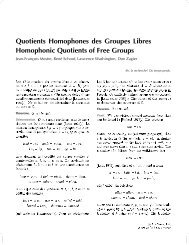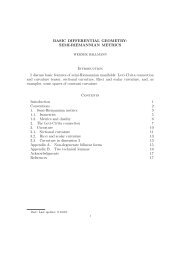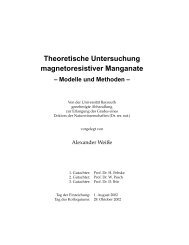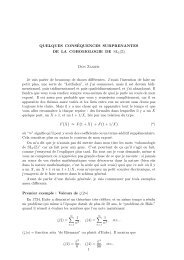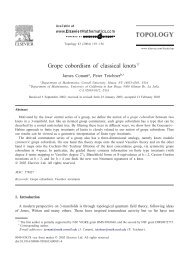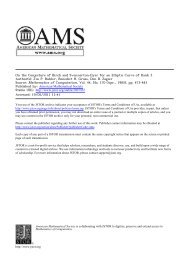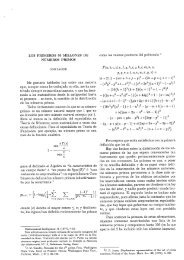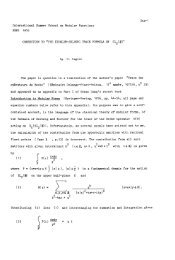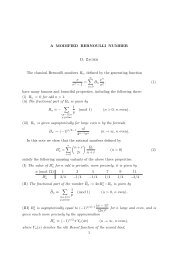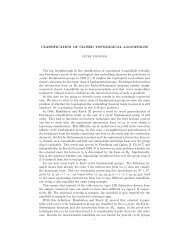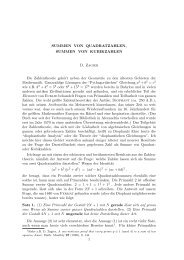Elliptic Modular Forms and Their Applications - Up To
Elliptic Modular Forms and Their Applications - Up To
Elliptic Modular Forms and Their Applications - Up To
Create successful ePaper yourself
Turn your PDF publications into a flip-book with our unique Google optimized e-Paper software.
50 D. Zagier<strong>and</strong> hence fix the function uniquely in a neighborhood of any point where itis holomorphic), so that, at least generically, this describes all solutions of thenon-linear differential equation Ch[f] =0 in modular terms. ♥Our second “application” of the ring ˜M ∗ (Γ 1 ) describes an unexpected appearanceof this ring in an elementary <strong>and</strong> apparently unrelated context.♠ Moments of Periodic FunctionsThis very pretty application of the modular forms E 2 , E 4 , E 6 is due toP. Gallagher. Denote by P the space of periodic real-valued functions on R,i.e., functions f : R → R satisfying f(x +2π) =f(x). Foreach∞-tuplen =(n 0 ,n 1 ,...) of non-negative integers (all but finitely many equal to 0)we define a “coordinate” I n on the infinite-dimensional space P by I n [f] =∫ 2π0f(x) n0 f ′ (x) n1 ··· dx (higher moments). Apart from the relations amongthese coming from integration by parts, like ∫ f ′′ (x)dx =0or ∫ f ′ (x) 2 dx =− ∫ f(x)f ′′ (x)dx, we also have various inequalities. The general problem, certainlytoo hard to be solved completely, would be to describe all equalities <strong>and</strong>inequalities among the I n [f]. As a special case we can ask for the completelist of inequalities satisfied by the four moments ( A[f],B[f],C[f],D[f] ) :=(∫ 2π0 f, ∫ 2π0 f 2 , ∫ 2π0 f 3 , ∫ 2π0 f ′ 2 ) as f ranges over P. Surprisingly enough, theanswer involves quasimodular forms on SL(2, Z). First, by making a linearshift f ↦→ λf + μ with λ, μ ∈ R we can suppose that A[f] = 0 <strong>and</strong>D[f] = 1. The problem is then to describe the subset X ⊂ R 2 of pairs( ) (∫ 2πB[f], C[f] =0 f(x)2 dx, ∫ 2π0 f(x)3 dx ) where f ranges over functions inP satisfying ∫ 2π0 f(x)dx =0<strong>and</strong> ∫ 2π0 f ′ (x) 2 dx =1.Theorem (Gallagher). We have X = { (B,C) ∈ R 2 | 0



